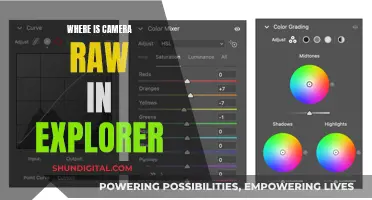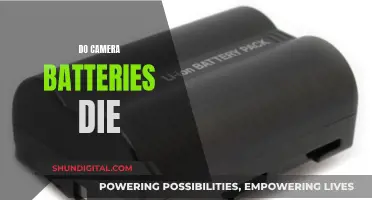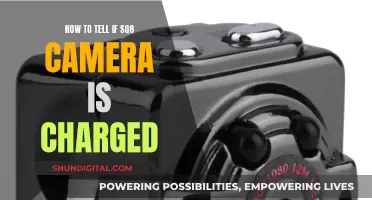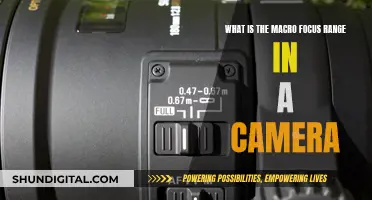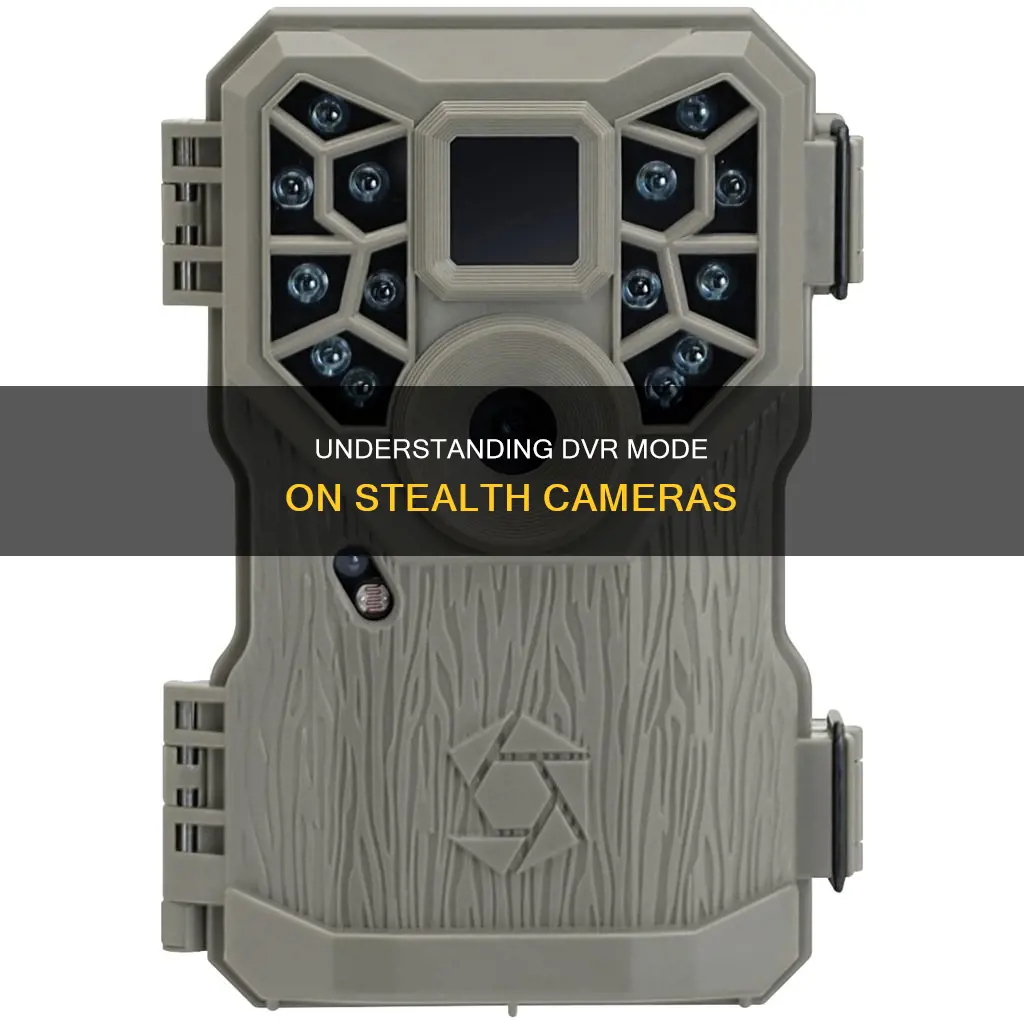
A DVR (Digital Video Recorder) is a device that records video content in a digital format and stores it on a disk drive, SD card, or USB flash drive. The DVR mode on a Stealth Cam allows users to continuously record new images or videos, even when there is no motion detected. This is particularly useful for capturing footage of animals that may be out of range of the motion sensor or moving slowly. When the SD card reaches capacity, the camera will start deleting the oldest recorded files to make space for new ones.
| Characteristics | Values |
|---|---|
| Purpose | Surveillance, security, wildlife monitoring |
| Recording Mode | Continuous recording |
| Trigger | Motion or heat detection |
| Recording Format | Digital |
| Storage | SD card |
| File Management | Oldest files deleted to make space for new ones |
| Setup | Command PRO app |
| Image Resolution | 14MP |
| Video Resolution | HD |
| Video Length | Up to 180 seconds |
| Trigger Speed | 0.45 seconds |
| Range | 100 feet |
| Power Source | 8 AA batteries |
What You'll Learn

How does DVR mode work on a Stealth Cam?
The DVR (Digital Video Recorder) mode on a Stealth Cam enables continuous video recording, making it ideal for uninterrupted monitoring. This feature is particularly useful for those who require constant surveillance in outdoor settings, such as wildlife enthusiasts, researchers, and security personnel.
When DVR mode is activated, the Stealth Cam operates as a continuous recording device, capturing and saving video footage in a loop to an SD card. It overwrites the oldest files when necessary, ensuring that no moment is missed and providing a steady stream of video data. This is especially beneficial for tracking wildlife patterns or enhancing property security.
DVR mode on the Stealth Cam offers flexibility in capturing footage. It allows users to record videos continuously or only when motion is detected, ensuring that crucial moments are not missed. This feature sets it apart from standard modes that save clips solely triggered by movement.
The setup process for DVR mode on a Stealth Cam is straightforward. Users need to ensure their SD card is formatted and then navigate to the camera settings to select 'DVR mode' for activation. It is important to use a high-quality SD card that meets the camera's specifications and to regularly format the card within the camera to prevent errors.
DVR mode provides users with the ability to customize recording settings, such as video quality, duration, and motion detection sensitivity, to suit their specific monitoring needs. This customization ensures efficient use of storage space and helps capture the desired footage. For example, motion detection mode conserves storage by triggering recording only when movement is detected.
Additionally, DVR mode supports loop recording, which further optimizes storage management. This feature automatically overwrites older footage to free up space for new recordings, ensuring uninterrupted operation. The combination of loop recording and the overwriting of older files ensures that the memory card never runs out of space.
To maximize the performance of a Stealth Cam in DVR mode, it is important to consider battery life. Adjusting the camera's settings to reduce power consumption, such as lowering the resolution or frame rate, can help prolong battery life. Additionally, setting motion-activated recording can further extend battery life by capturing footage only when triggered by movement.
In summary, DVR mode on a Stealth Cam provides users with continuous video recording capabilities, making it ideal for surveillance and monitoring purposes. With its flexibility, customization options, and efficient storage management, DVR mode enhances the overall functionality of the Stealth Cam for both amateurs and professionals in various outdoor scenarios.
Lithium-Ion Camera Batteries: Powering Your Photography
You may want to see also

What are the benefits of DVR mode on a Stealth Cam?
The DVR mode on a Stealth Cam offers several benefits for users seeking to capture high-quality footage for surveillance, monitoring, or security purposes. Here are some advantages of using DVR mode on a Stealth Cam:
- Continuous Recording: DVR mode enables the Stealth Cam to function as a continuous recording device, capturing video footage non-stop. This feature is ideal for monitoring without interruption, ensuring that no moment is missed. It is particularly useful for wildlife enthusiasts, researchers, and security personnel who require constant video surveillance in outdoor settings.
- Flexibility: DVR mode offers enhanced flexibility by allowing users to record videos continuously or only when motion is detected. This ensures that crucial moments are not missed. Additionally, users can customize recording settings such as video quality, duration, and motion detection sensitivity to suit their specific needs.
- Efficient Storage Management: The DVR mode efficiently manages storage by overwriting older footage to make space for new recordings. This loop recording feature ensures that the camera continues to operate without interruptions, providing extended recording times.
- High-Quality Footage: DVR mode allows users to capture high-quality video footage in real time, providing clear and detailed recordings. It records video at a higher resolution and frame rate, resulting in smoother and clearer footage, especially when capturing fast-moving objects or details.
- Seamless Integration with Security Systems: The benefits of DVR mode extend beyond the camera itself. It facilitates seamless integration with other security systems, making it a versatile tool for comprehensive surveillance solutions. The remote accessibility and playback features of DVRs enhance the overall functionality of the Stealth Cam for security purposes.
- Easy Setup: Setting up DVR mode on a Stealth Cam is straightforward. Users can activate it through the camera's settings menu and adjust parameters such as video quality, resolution, and recording duration according to their preferences.
In summary, the DVR mode on a Stealth Cam provides benefits such as continuous recording, flexibility in capturing footage, efficient storage management, high-quality video, seamless integration with security systems, and easy setup. These advantages make it a valuable tool for wildlife enthusiasts, researchers, and anyone seeking advanced surveillance and monitoring capabilities.
Understanding Drive Mode in Action Cameras
You may want to see also

How is DVR mode activated on a Stealth Cam?
To activate DVR mode on a Stealth Cam, you must first ensure that your SD card is formatted correctly and that your camera has sufficient power. Then, you can navigate to the camera settings and select 'DVR mode' to activate it.
DVR mode, or Digital Video Recorder Mode, allows your Stealth Cam to record continuously, overwriting the oldest files when the storage is full. This feature is ideal for constant monitoring without interruption, ensuring you never miss a moment.
When activating DVR mode, it is important to ensure that your memory card has enough space available. You should also familiarise yourself with the camera's recording settings, such as video quality, resolution, and duration, to adjust them according to your preferences. Once DVR mode is activated, you can start recording by pressing the designated button on the camera.
DVR mode offers several benefits for wildlife monitoring, surveillance, and security purposes. It enables you to capture high-quality video footage with audio, providing valuable insights for researchers, wildlife enthusiasts, and photographers. The mode also supports loop recording, ensuring continuous operation by overwriting older footage to free up space.
To maximise the performance of your Stealth Cam, it is recommended to use high-quality SD cards that meet the camera's specifications and to regularly format the SD card within the camera to prevent errors. Properly positioning the camera with a clear view is also crucial to avoid obstructions.
Charging Camera Batteries: USB Option for Photographers
You may want to see also

What are the limitations of DVR mode on a Stealth Cam?
The DVR (Digital Video Recorder) mode on a Stealth Cam offers a host of benefits, particularly for those seeking continuous video recording for surveillance and monitoring purposes. However, it is important to be aware of certain limitations and constraints associated with this mode to ensure an optimal user experience.
One of the key limitations of DVR mode is the storage capacity. While modern trail cameras offer scalable storage options, the DVR mode's continuous recording can eventually fill up the memory card. To address this, the Stealth Cam's DVR mode employs a loop recording mechanism, overwriting the oldest files to make room for new footage. This ensures uninterrupted recording but may result in the loss of older, potentially important data. Therefore, users need to manage their storage efficiently, regularly reviewing and deleting unnecessary files to free up space.
Another limitation arises from the power requirements of the DVR mode. As the camera is in constant recording mode, it consumes more power, leading to reduced battery life. To mitigate this, users can adjust the camera settings to optimise power consumption, such as reducing the resolution or frame rate. Additionally, using high-quality batteries designed for power-intensive devices and regularly checking and replacing them are recommended.
The DVR mode's continuous recording feature may also result in lengthy video files, which can be cumbersome to review and analyse. The Stealth Cam addresses this by allowing users to set an interval for the recorded footage, such as 1-minute, 3-minute, 5-minute, or 10-minute segments. This makes it easier to manage and review the recorded data.
Furthermore, it is important to ensure the SD card is compatible and properly formatted for DVR mode to function correctly. Issues with the memory card can lead to camera freezing or other technical difficulties. Regularly formatting the SD card within the camera is recommended to prevent errors.
While the DVR mode offers flexibility in recording settings, such as video quality, duration, and motion detection sensitivity, these settings need to be carefully configured to suit the specific monitoring needs. For instance, selecting a higher resolution and frame rate will enhance video quality but also increase storage requirements.
Lastly, the DVR mode's continuous recording may capture a large volume of irrelevant or unwanted footage, especially in settings with frequent movement. This can make it challenging to identify and extract meaningful insights from the recorded data. Therefore, users should strategically position the camera and consider using features like motion-activated recording to capture only relevant events.
In conclusion, while the DVR mode on a Stealth Cam offers the advantage of uninterrupted recording, it is important to be mindful of its limitations. By understanding and addressing these constraints, users can maximise the functionality of their Stealth Cam for effective surveillance and monitoring.
Where's the Adjustment Brush? Camera Raw's Essential Tool
You may want to see also

How does DVR mode on a Stealth Cam compare to other cameras?
The DVR (Digital Video Recorder) mode on a Stealth Cam enables continuous video recording, making it ideal for monitoring without interruption. This feature is particularly useful for those who require constant video surveillance in outdoor settings, such as wildlife enthusiasts, researchers, and security personnel.
In DVR mode, the Stealth Cam continuously captures images or records video clips upon detecting movement within its field of view. It records footage in a loop, overwriting the oldest files when the storage is full to make space for new ones. This ensures that users never miss a moment and always have the latest footage.
Compared to other cameras, the DVR mode on the Stealth Cam offers several advantages. Firstly, it provides enhanced flexibility in capturing footage. Users can record videos continuously or only when motion is detected, ensuring that no crucial moments are missed. Secondly, DVR mode allows users to customize recording settings such as video quality, duration, and motion detection sensitivity to suit their specific monitoring needs. This level of customization helps to optimize storage space and battery life, and ensures that important footage is captured.
Additionally, DVR mode on the Stealth Cam supports features like loop recording, which is not available on all cameras. This feature ensures continuous operation without interruptions by overwriting older footage to free up space for new recordings. The seamless integration of motion detection technology in DVR mode further enhances the camera's surveillance capabilities.
The Stealth Cam's DVR mode also stands out for its uninterrupted recording capability, which is not standard on all cameras. This feature ensures that all important events are captured without gaps, making it ideal for security and surveillance purposes. The ability to easily access and retrieve recorded footage for playback or review is another advantage of the Stealth Cam's DVR mode.
In summary, the DVR mode on a Stealth Cam offers enhanced flexibility, customization, and uninterrupted recording capabilities compared to other cameras. It maximizes the functionality of the Stealth Cam for security and surveillance purposes, providing peace of mind and ensuring that users capture all the important moments.
Camera Batteries: Do They Die?
You may want to see also
Frequently asked questions
DVR mode on a stealth camera allows the camera to record video clips continuously when it detects movement within its field of view.
You can set up the DVR mode on a Stealth Cam using the Command PRO app.
DVR mode is beneficial for security purposes as it allows for extended monitoring of an area without the need for constant battery changes or memory card swaps. It also ensures that you don't miss any important footage.
Ensure that the camera is set up in a secure location as it will be recording continuously and may be at risk of theft or damage. Regularly check the camera and replace batteries and memory cards as needed.


